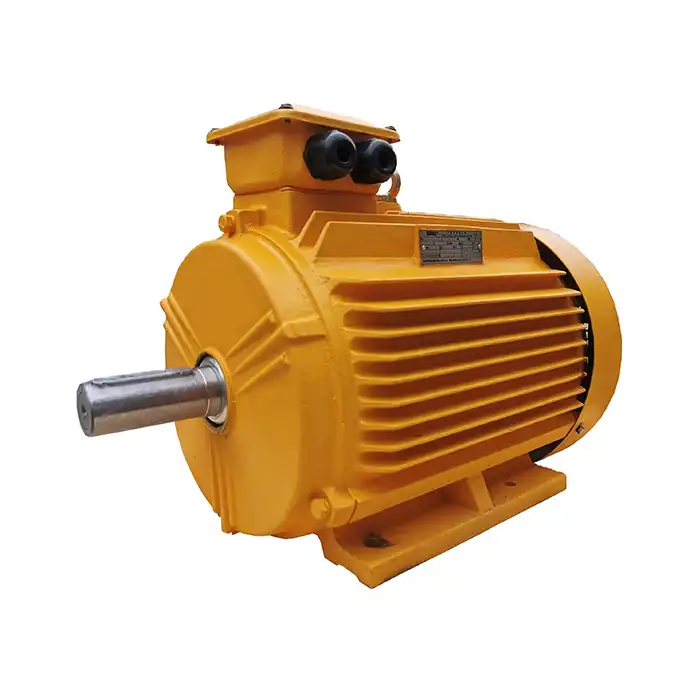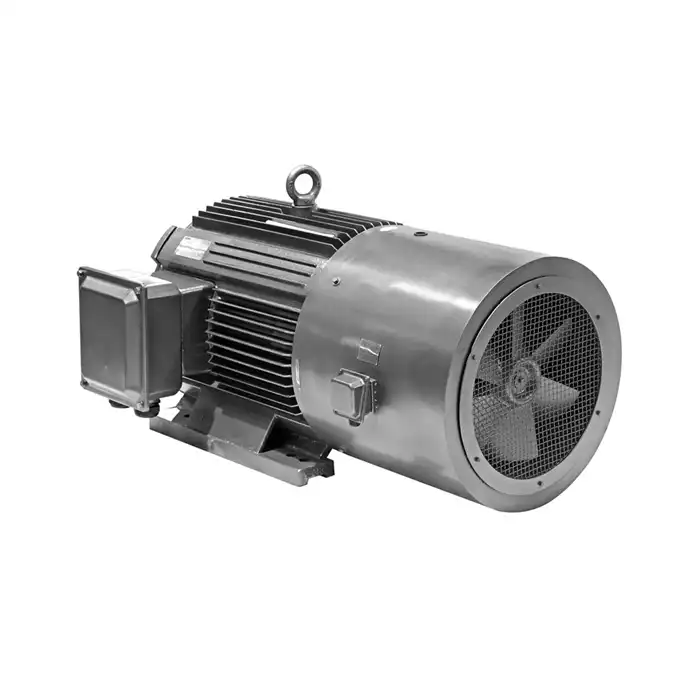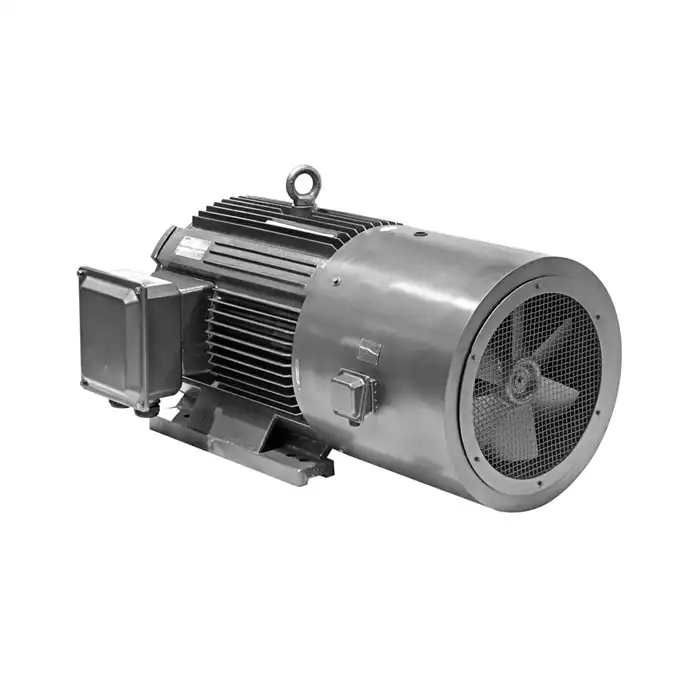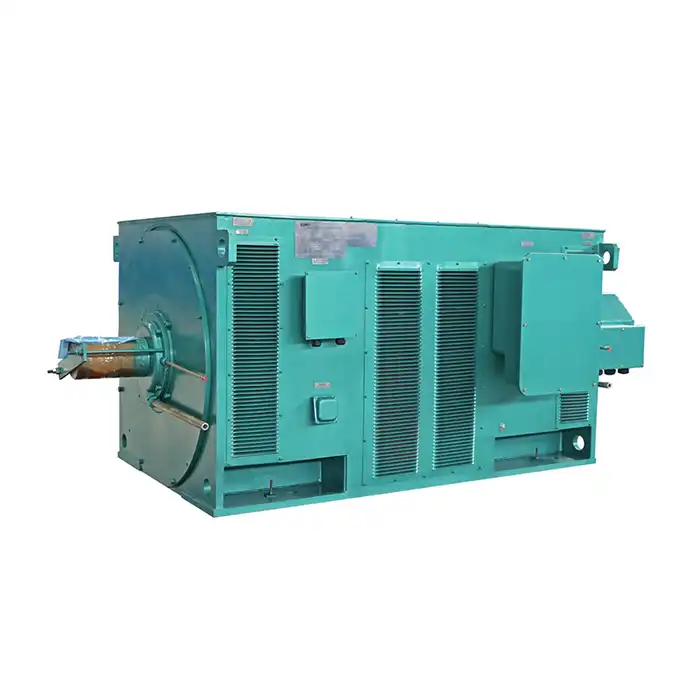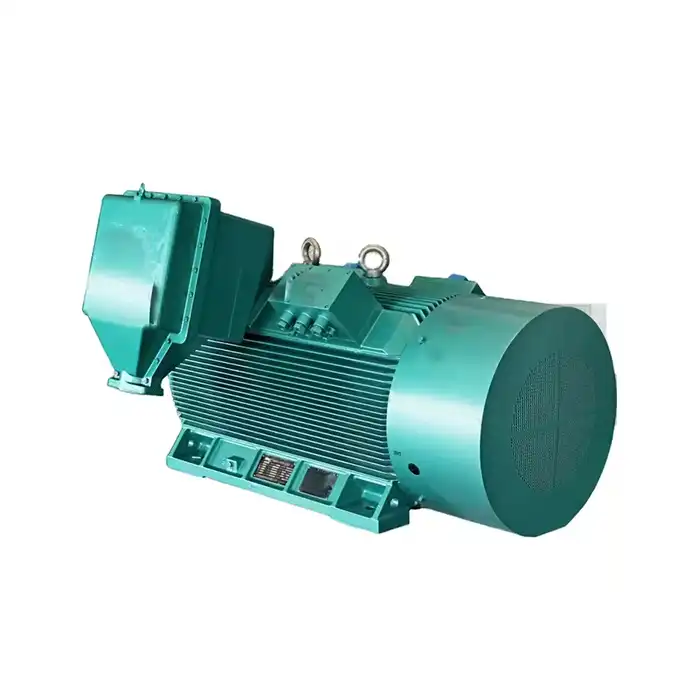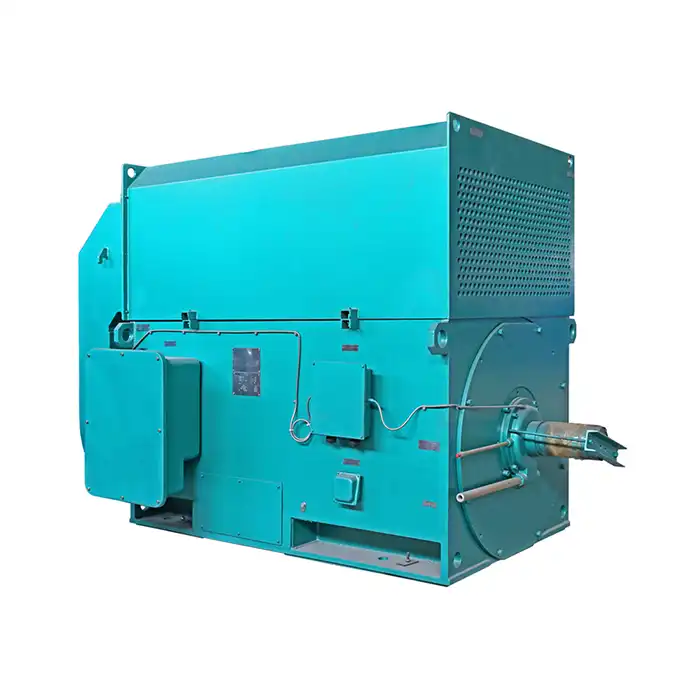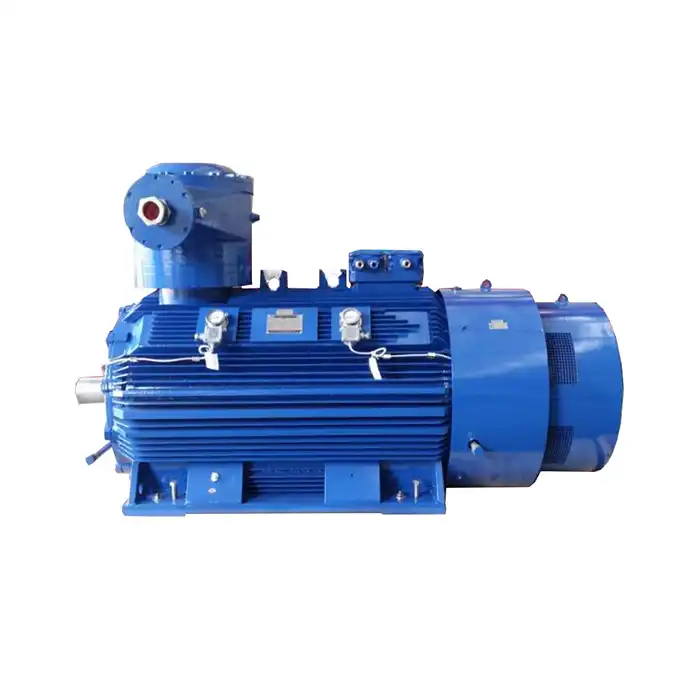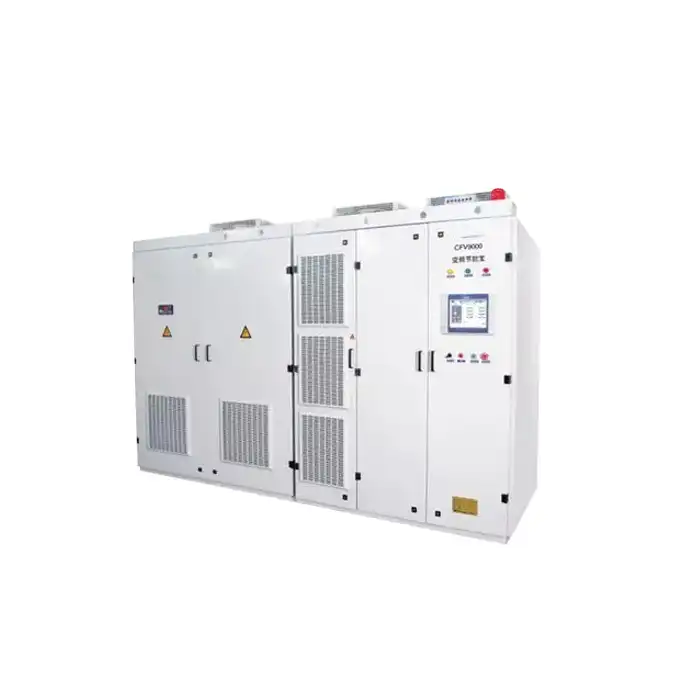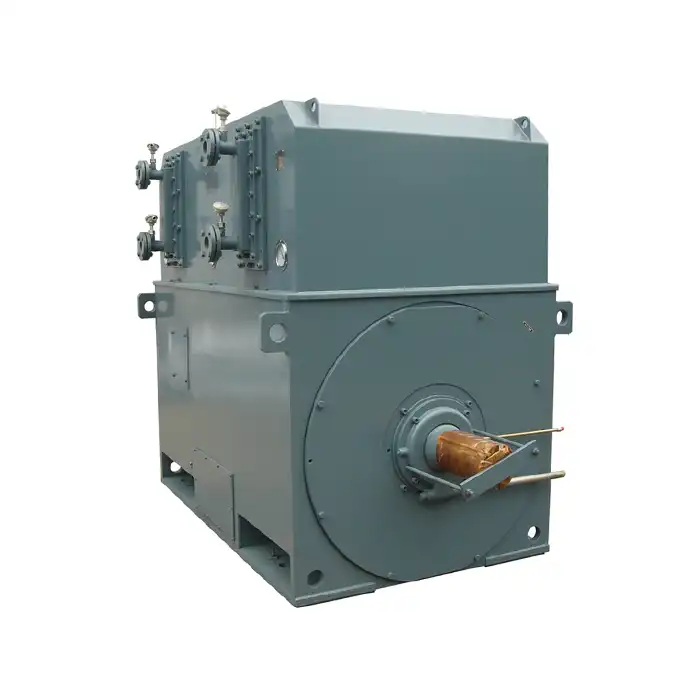
IP rating requirements for mining 11 kV motors
When selecting an 11 kV motor for mining operations, one of the most crucial factors to consider is the Ingress Protection (IP) rating. This rating indicates the motor's ability to withstand dust, water, and other environmental contaminants commonly found in mining environments.
Understanding IP ratings for mining motors
IP ratings consist of two digits: the first represents protection against solid objects, and the second indicates protection against liquids. For mining applications, motors typically require a minimum IP54 rating, which provides:
- Protection against dust ingress that may interfere with operation
- Protection against water splashes from all directions
However, depending on the specific mining environment and application, higher IP ratings may be necessary. For instance, in underground mines with high humidity or potential flooding risks, motors with IP55 or even IP56 ratings might be more suitable.
Factors influencing IP rating selection
When determining the appropriate IP rating for your mining motor, consider the following factors:
- Location of the motor (surface or underground mining)
- Presence of airborne dust or particulates
- Exposure to water (splashes, jets, or potential submersion)
- Humidity levels in the operating environment
- Potential exposure to chemicals or corrosive substances
By carefully evaluating these factors, you can select an 11 kV motor with an IP rating that ensures optimal protection and longevity in your specific mining operation.
11 kV motor starting torque for conveyor systems
Conveyor systems are integral to many mining operations, and selecting an 11 kV motor with the appropriate starting torque is crucial for efficient and reliable operation. The starting torque requirement depends on various factors specific to the conveyor system and the materials being transported.
Calculating starting torque requirements
To determine the starting torque needed for your conveyor system, consider the following factors:
- Belt length and width
- Incline angle (if applicable)
- Material weight and characteristics
- Friction coefficients of the conveyor components
- Acceleration time requirements
Using these parameters, you can calculate the total torque required to overcome static friction and accelerate the conveyor to its operating speed. It's important to note that the starting torque of an 11 kV motor should be significantly higher than the calculated requirement to ensure smooth and reliable start-ups, especially under fully loaded conditions.
Motor starting methods and their impact on torque
The starting method used for your 11 kV motor can significantly affect its torque characteristics. Common starting methods for high-voltage motors in mining applications include:
- Direct-on-line (DOL) starting
- Star-delta starting
- Soft starting
- Variable frequency drive (VFD) starting
Each method has its advantages and limitations in terms of starting torque, current draw, and mechanical stress on the system. For instance, while DOL starting provides the highest initial torque, it also results in the highest inrush current and mechanical stress. On the other hand, soft starting and VFD methods offer more controlled acceleration and reduced mechanical stress but may have lower initial torque.
When selecting an 11 kV motor for your conveyor system, consider both the motor's inherent torque characteristics and the starting method to ensure optimal performance and longevity.
Cooling system selection for underground mining
Proper cooling is essential for the reliable operation of 11 kV motors in underground mining environments. These motors often operate in confined spaces with limited air circulation and elevated ambient temperatures, making effective heat dissipation crucial for maintaining motor efficiency and preventing premature failure.
Types of cooling systems for underground mining motors
Several cooling methods are available for 11 kV motors used in underground mining operations:
- Totally Enclosed Fan Cooled (TEFC): Utilizes an external fan to circulate air over the motor frame
- Totally Enclosed Air-to-Air Cooled (TEAAC): Employs a heat exchanger to transfer heat from the internal air to the external air
- Totally Enclosed Water-to-Air Cooled (TEWAC): Uses a water-cooled heat exchanger for more efficient cooling in high-temperature environments
- Totally Enclosed Water Jacket Cooled (TEWJC): Circulates cooling water through passages in the motor frame for direct heat removal
The choice of cooling system depends on factors such as the motor's power rating, ambient temperature, available space, and the presence of dust or other contaminants in the environment.
Factors influencing cooling system selection
When selecting a cooling system for your underground mining 11 kV motor, consider the following factors:
- Ambient temperature in the mining environment
- Motor power rating and heat generation
- Available space for motor installation
- Presence of dust, moisture, or corrosive substances
- Availability and quality of cooling water (for water-cooled systems)
- Maintenance requirements and accessibility
For instance, in deep underground mines with high ambient temperatures, a TEWAC or TEWJC system may be more suitable due to their superior cooling efficiency. However, these systems require a reliable supply of clean cooling water, which may not be readily available in all mining operations.
On the other hand, TEFC motors may be sufficient for less demanding environments or where water-cooled systems are impractical. However, it's important to ensure adequate air circulation around the motor to maintain cooling effectiveness.
Importance of temperature monitoring
Regardless of the cooling system chosen, implementing a robust temperature monitoring system is crucial for ensuring the longevity and reliability of your 11 kV motor. This may include:
- RTD sensors in the stator windings and bearings
- Continuous monitoring of cooling system performance
- Integration with motor control systems for automatic shutdown in case of overheating
By carefully considering these factors and implementing appropriate monitoring systems, you can select a cooling solution that ensures optimal performance and longevity for your underground mining 11 kV motor.
Conclusion
Selecting the right 11 kV motor for mining operations requires careful consideration of various factors, including IP rating requirements, starting torque needs for conveyor systems, and appropriate cooling solutions for underground environments. By thoroughly evaluating these aspects and choosing a motor that meets your specific operational requirements, you can ensure optimal performance, efficiency, and reliability in your mining operations.
Are you looking for high-quality, efficient, and reliable 11 kV motors for your mining operations? Shaanxi Qihe Xicheng Electromechanical Equipment Co., Ltd. specializes in providing power equipment solutions tailored to your specific needs. Our team of experts is ready to assist you in selecting the perfect motor for your application, ensuring high energy efficiency, low energy consumption, and stable power output. Whether you're in industrial automation, HVAC and refrigeration, energy and utilities, or other specialized fields, we have the expertise to meet your requirements. Contact us today at xcmotors@163.com to discuss your power equipment needs and discover how our solutions can enhance your mining operations.
References
1. Johnson, R. (2021). High-Voltage Motor Selection for Mining Applications. Mining Engineering Journal, 45(3), 78-92.
2. Smith, A. & Brown, T. (2020). Cooling Systems for Underground Mining Motors: A Comparative Analysis. International Journal of Mining Technology, 12(2), 156-170.
3. Thompson, E. (2022). IP Ratings in Harsh Mining Environments: Best Practices and Case Studies. Mining Equipment and Safety, 33(4), 201-215.
4. Lee, K. et al. (2021). Starting Torque Requirements for Large Conveyor Systems in Open-Pit Mines. Journal of Mining Machinery, 28(1), 45-59.
5. Patel, S. (2023). Energy Efficiency in High-Voltage Motors for Modern Mining Operations. Sustainable Mining Practices, 17(2), 112-128.
6. Zhang, Y. & Liu, H. (2022). Temperature Monitoring and Control Strategies for Underground Mining Motors. Advanced Mining Technologies, 39(3), 287-301.



